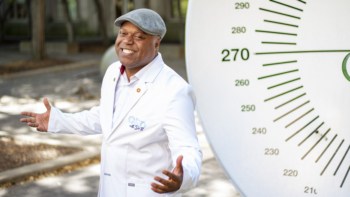Rose Mutiso and Jessamyn Fairfield say that public engagement not only makes science more accessible but also helps it to be more diverse and collaborative

All too often, science is carried out by people from the same demographics – namely, white men in the global north. The diversity problem in science is well recognized and many institutions have begun to tackle it through a range of initiatives. Despite those efforts, however, the issues persist and the representation of women and other minorities lags behind men in most science, technology, engineering and mathematics (STEM) disciplines.
There also remains a failure to tap into the scientific potential of entire regions such as sub-Saharan Africa, which accounts for 15% of the global population but less than 1% of published research in STEM subjects. This problem is influenced by a range of factors, such as biases shared by both men and women as well as structural barriers in academia. It is also affected by socio-economic development in the global south and “leaky” pipeline issues. The work and ideas of scientists in Africa often have very limited visibility and impact in public life. Yet local perspectives on complex issues are crucial to help people navigate technological challenges and opportunities.
We believe that inclusive and diverse public engagement can be an important – but often overlooked – tool to help create a more representative and vibrant global scientific community. In Ireland, for example, the past decade has seen an explosion of events and support for public engagement with science. Arts-based approaches are especially strong in Ireland, a phenomenon that can be attributed both to the strong literary and theatrical tradition in the country, as well as the influence of those that have pioneered co-equal science and arts spaces such as the Science Gallery.
Bright Club – a variety night combining academic research with stand-up comedy – began in the UK in 2009. The model – in which academics develop stand-up-comedy sets about their work – transferred to Ireland in 2015, where to date more than 70 events have run. Crucially, Bright Club includes training for academics based on improvisation and theatre to teach them the principles of comedy and performance.
Since each event includes not only scientists but also researchers from social science and humanities alongside comedians and other performers, the audience is broader than at typical science outreach events. The training element also empowers researchers from underrepresented groups who might not feel confident to volunteer for a public-facing event without support. The diversity in discipline, speakers and location all draw in diverse audiences, breaking down barriers so that more people can access scientific knowledge.
Diverse and collaborative
The experience of successfully exporting the Bright Club format to Ireland is one that can certainly be replicated elsewhere. Kenya, for example, needs a community of skilled science ambassadors to better integrate science into the wider culture. Borrowing from Bright Club’s model, the Mawazo Institute, based in the Kenyan capital, launched the Nairobi Ideas programme. This includes platforms such as free public events, podcasting and blogging for local scientists and members of the public to share perspectives on the role of science and innovation in our daily lives. The institute also trains local scientists – especially women – in public engagement and science communication, shaping them into public-facing researchers. Why we need to keep talking about equality in physics
There are some words of caution with this model – adapting public engagement across borders is an exercise in cultural sensitivity. Even in the same language, use of slang and metaphors can be quite different in different regions, even between regions within the same country. The level of formality expected from researchers can vary widely and communication styles – such as directness of speech and use of emotion – can be quite different.
This can be a disadvantage or an advantage when developing public engagement across borders. As two immigrants ourselves, we found great strength in sharing these tools with researchers, building capacity for new types of public engagement that can be carried out by a broader range of researchers. Indeed, our experiences corroborate studies showing that participation in public-engagement activities can enhance scientific identity and support people to remain in science, which is particularly important for those from underrepresented backgrounds.
Public engagement not only makes science more accessible, but also makes the scientific community more vibrant, diverse, and collaborative. We need more cross-cultural opportunities for science engagement where partners are equal and audience reach is beyond typical demographics. Bringing science to the public leads to better and more diverse science for a more equitable world.



